We often hear that we should be practicing our piano technique. But thinking about what needs to get practiced—it can be overwhelming! What should you focus on? What’s the best way to make use of your time?
In this lesson, we’ll go over key things to practice that you should not miss. And we’ll give you tips on making practice more fun!
Before you start, print out some free resources:
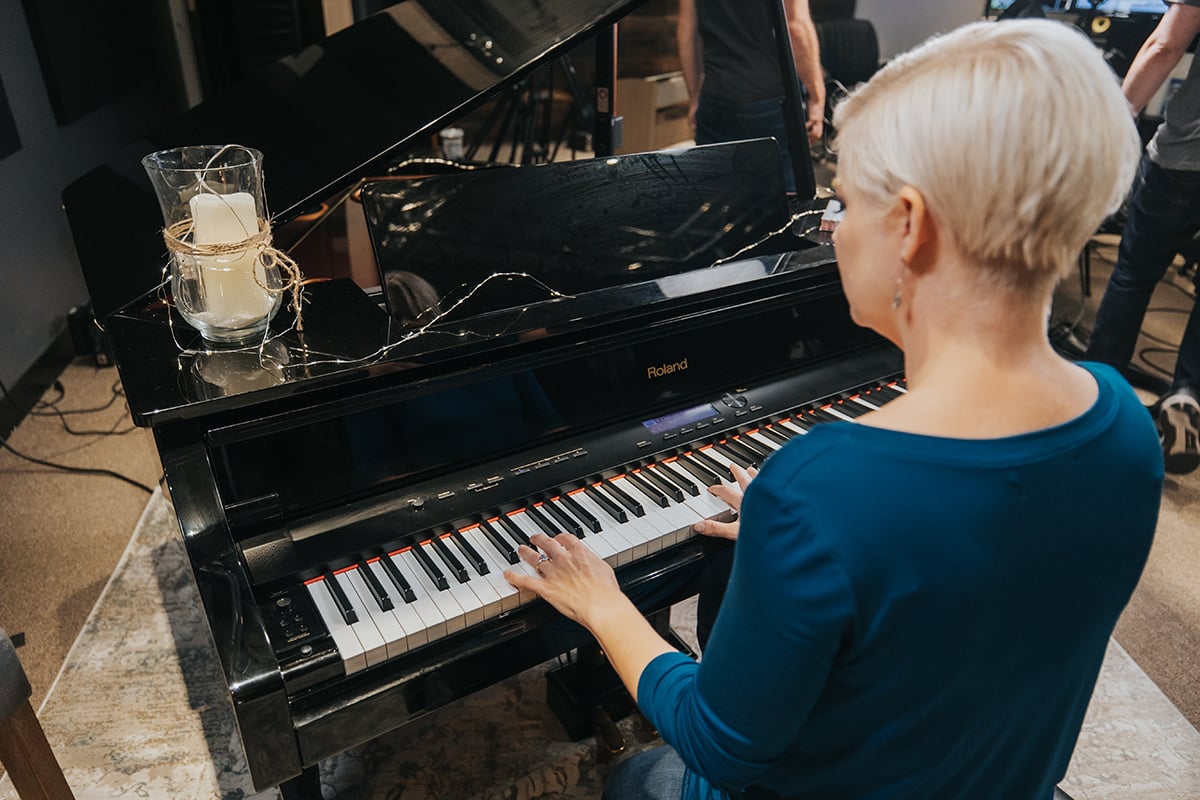
For many people, our left hands are weaker. And while the right hand typically carries the melody on the piano, piano wouldn’t be the same without the left hand providing beautiful arpeggios and accompaniment patterns. Your left hand deserves more love, so check out the De-stupefy Your Left Hand course to give it the attention it needs! Free with your Pianote membership.
CHECK IT OUTThe Circle of Fifths strikes fear in many music students, but we’re not going to ask you to memorize it! All we need you to do is print it out and place it on your music stand. And we’ll refer to the Circle of Fifths as a tool to help us practice.
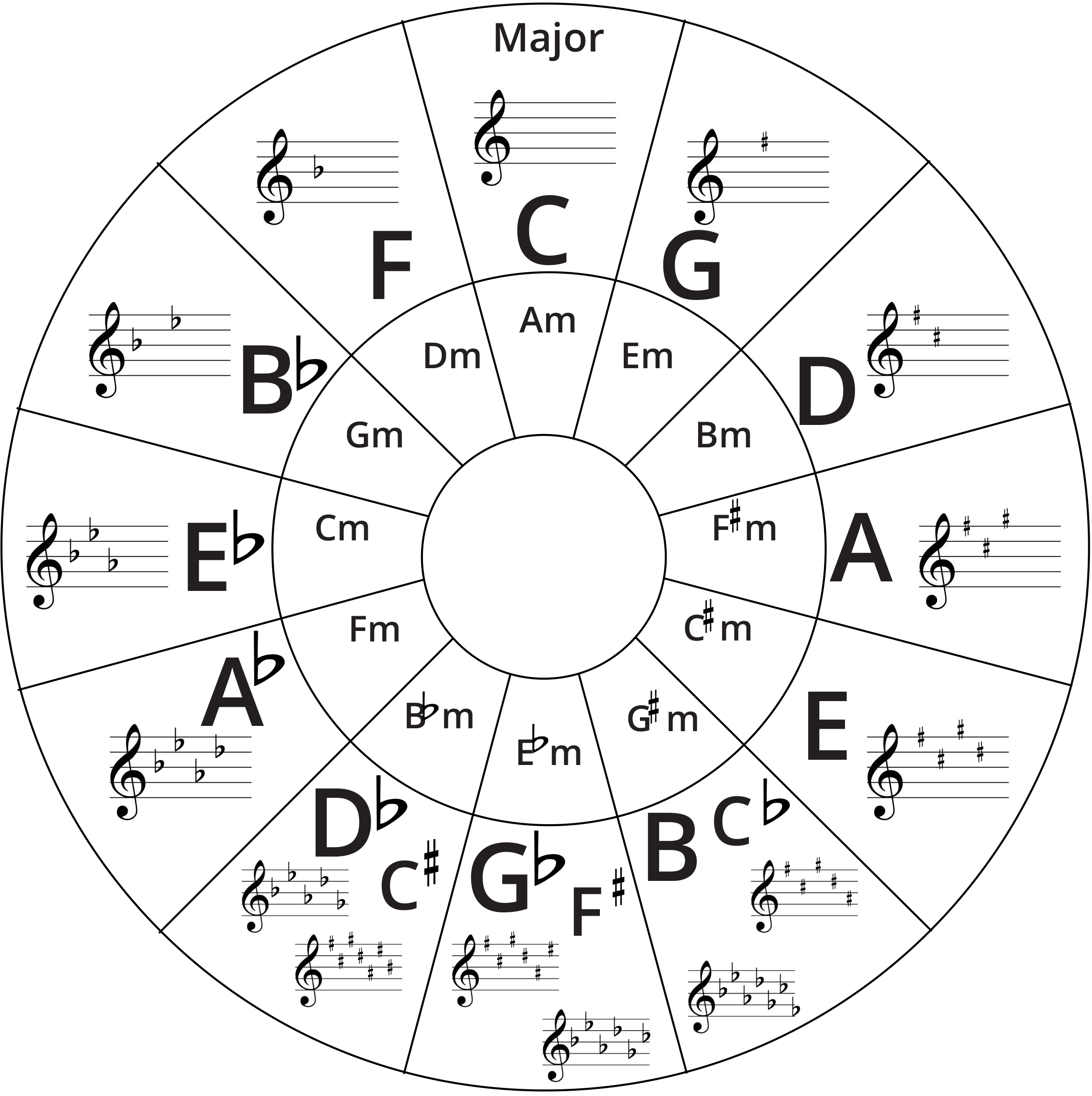
Think of it like this: the Circle of Fifths is just a cheat sheet to help you remember what notes are in what key.
Say you want to play a scale in A Major. Here’s how you’d use the Circle of Fifths:
The A Major scale will look like this:
A – B – C# – D – E – F# – G#
So, use your Circle of Fifths to practice your scales.
Let’s take D Major as an example. Find it on the Circle of Fifths, and you’ll see that D Major has two sharps, F and C. So, play the notes between an octave of Ds and remember to sharp F and C.
D – E – F# – G – A – B – C#
There are numerous ways to practice scales, such as:

No matter what you decide to practice on any particular day, here are some tips to get more bang out of your scale practice buck:
I found triads and inversions intimidating at first! There seems to be soooo many shapes and notes to memorize.
But once you understand the inversions formula, things get easier.
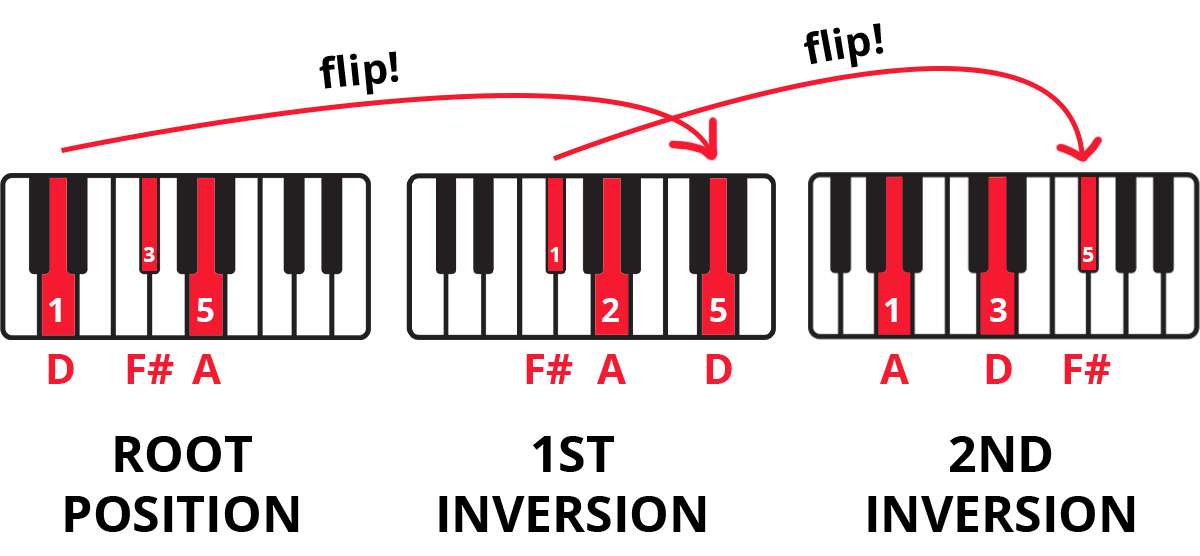
It’s helpful to think of inversions as shapes:
Be sure to download our triad worksheet for an example in D Major and B Minor. Practicing triads in their broken and solid form with the help of sheet music can help you quickly memorize those fingerings and shapes.
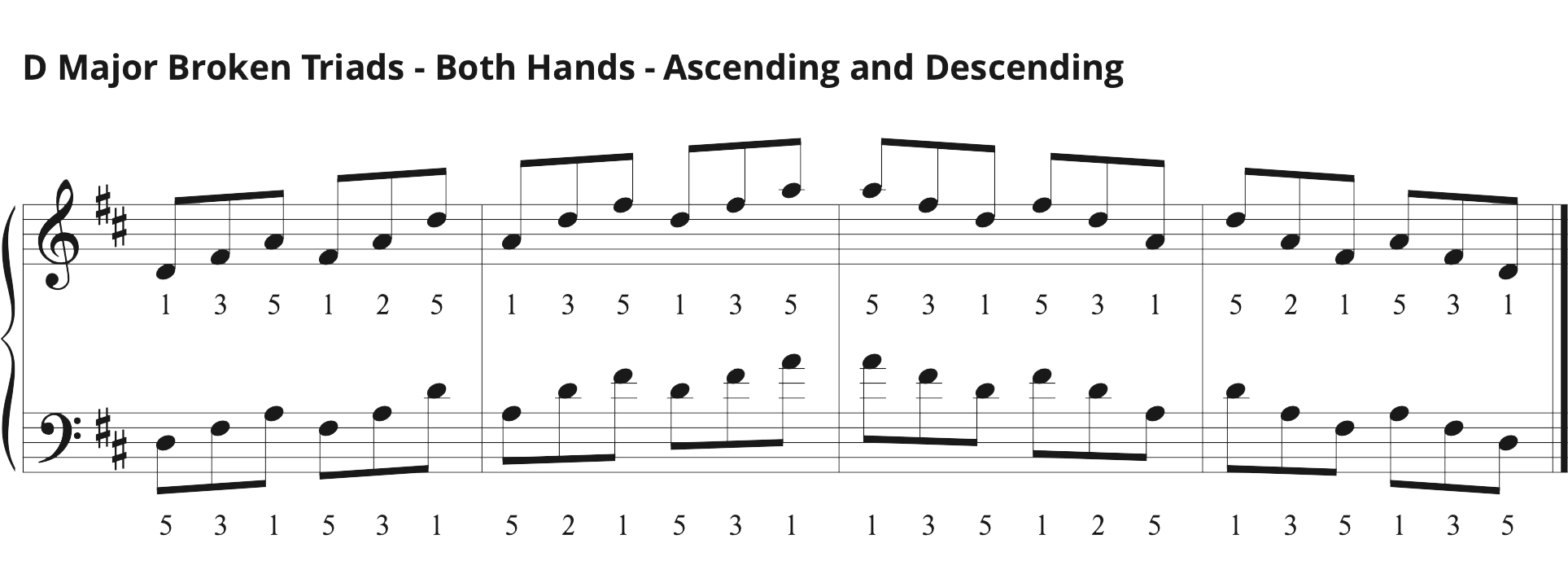
Again, find ways to engage your brain and avoid autopilot. Practice legato, practice staccato, and vary your dynamics.
🔥🎹 HOT TIP! For a cheatsheet of inversions in ALL keys, check out the free downloadable resources in our Ultimate Guide to Chord Inversions.
Arpeggios sound absolutely beautiful to practice. They also help you develop important skills and there are numerous ways to help make arpeggio practice fun.
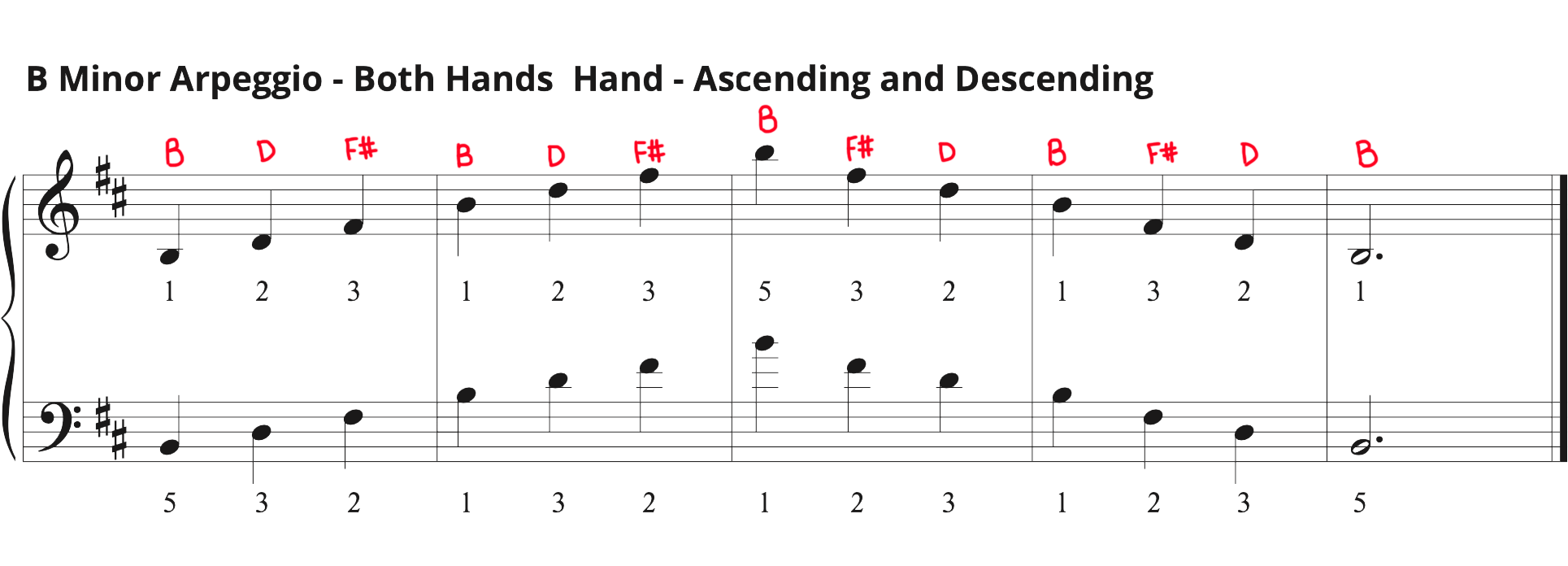
For example, you can hold down the sustain pedal and create a beautiful, dreamy sound.
You can also try playing an octave on your left hand as you practice your arpeggios on your right. This can sound very beautiful and dramatic!
Here are more arpeggio practice ideas and free lessons to guide you:
Remember: don’t just practice your major keys, practice your minor keys too!
A helpful way to remember to practice both major and minor keys is to practice the relative minor of whichever major key you’re focused on that day.
Relative minor keys have the same key signature (number of sharps and flats) as their relative major key.
How you find a relative minor key is by counting three half-steps down from the major key. Or, you can just look at the Circle of Fifths!
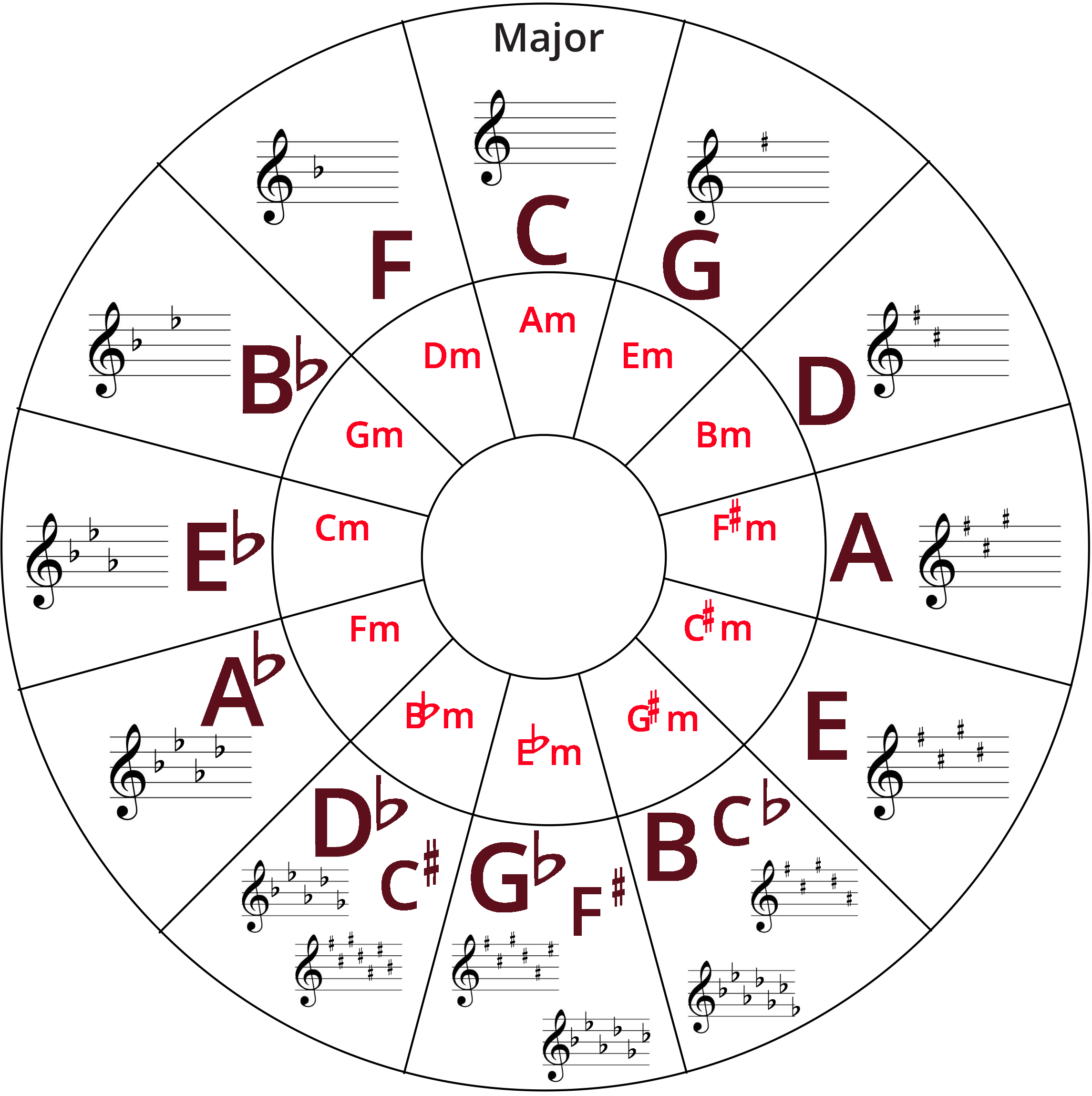
For example, three half-steps down from D is B, so B Minor is the relative minor key of D Major. B Minor uses the same key signature of D Major (F# and C#); the only difference is the scale starts and ends on B.

Most scale fingering looks like this:
1 – 2 – 3 – tuck – 1 – 2 – 3 – 4 – tuck …etc.
But not all scales have the same fingering pattern. For example, B Flat Major is usually played like this:
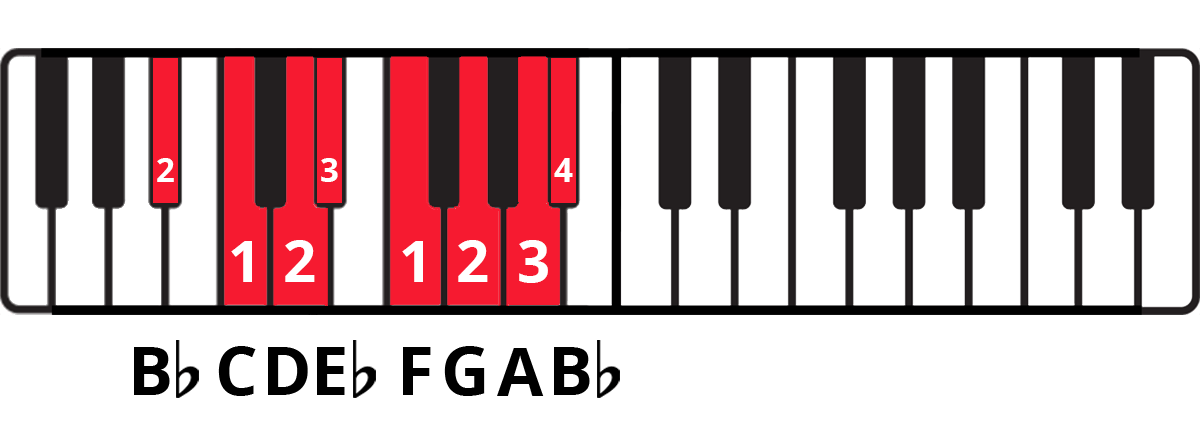
While looking up the traditional fingering for scales definitely helps, I encourage you to try out different fingerings and pick whichever feels best for you 🙂
These are just some ideas on how to make your technique practice more engaging. You don’t have to practice technique a full hour a day. Rather, pick a key or two to focus on and practice a few skills associated with that key, like scales, inversions, and arpeggios.
If you really want to step your technique up to the next level, check out our Piano Technique Made Easy resource with Cassi Falk. It’ll show you EVERYTHING you need to go from good to great!
Otherwise, happy practicing!

Lisa Witt has been teaching piano for more than 20 years and in that time has helped hundreds of students learn to play the songs they love. Lisa received classical piano training through the Royal Conservatory of Music, but she has since embraced popular music and playing by ear in order to accompany herself and others. Learn more about Lisa.


By signing up you’ll also receive our ongoing free lessons and special offers. Don’t worry, we value your privacy and you can unsubscribe at any time.
We use cookies for traffic data and advertising. Cookie Policy »